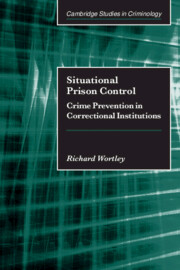List of references
Published online by Cambridge University Press: 22 September 2009
- Type
- Chapter
- Information
- Situational Prison ControlCrime Prevention in Correctional Institutions, pp. 226 - 247Publisher: Cambridge University PressPrint publication year: 2002



